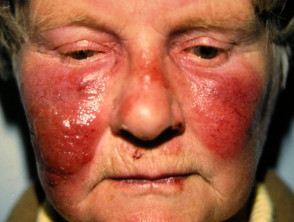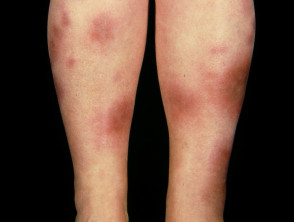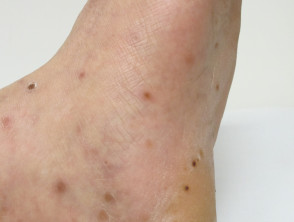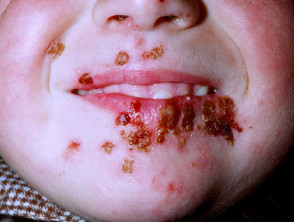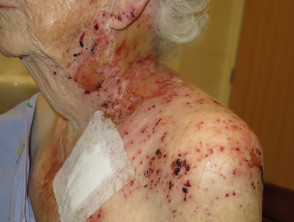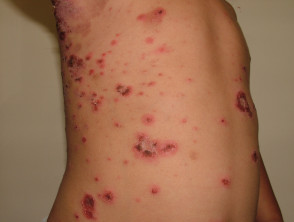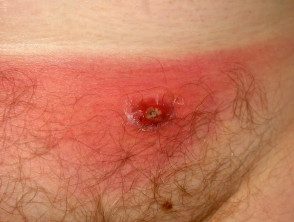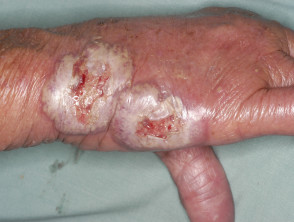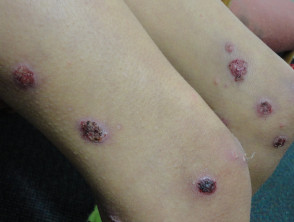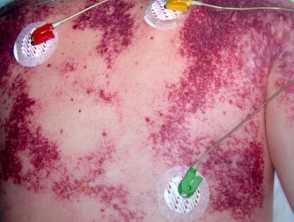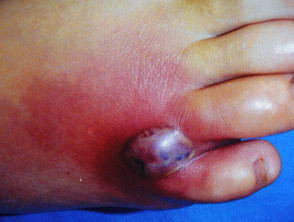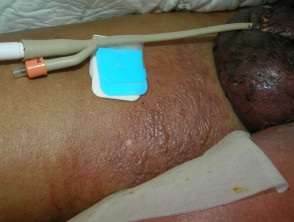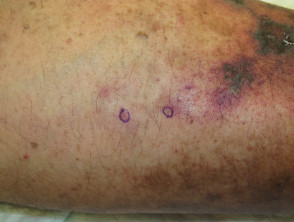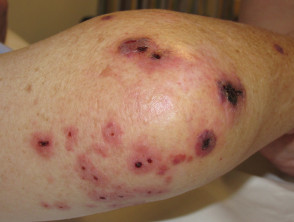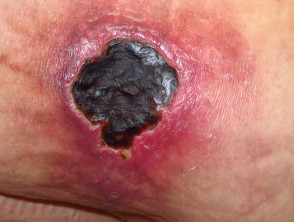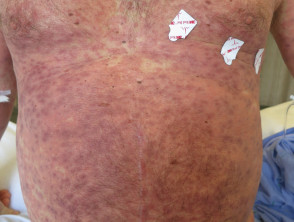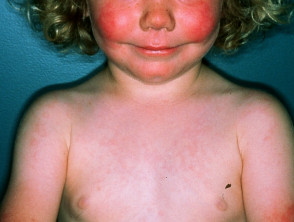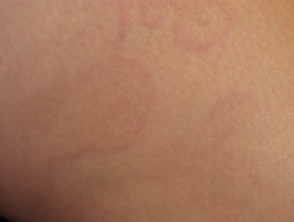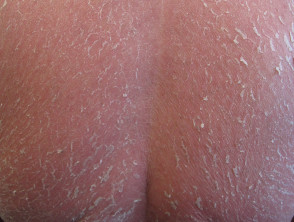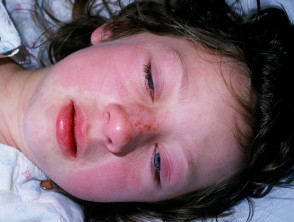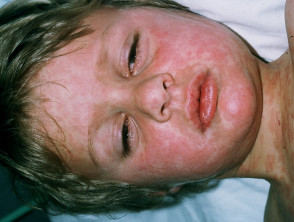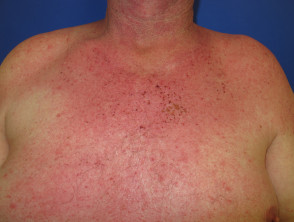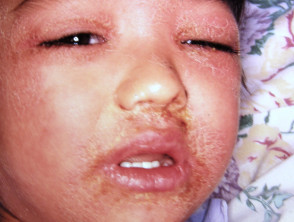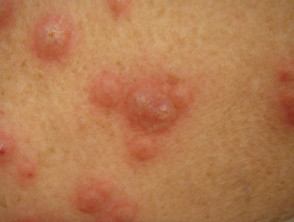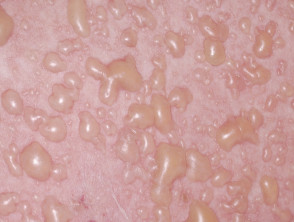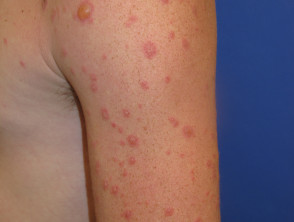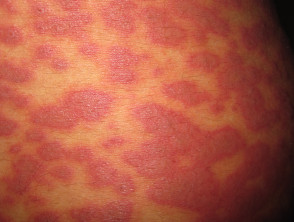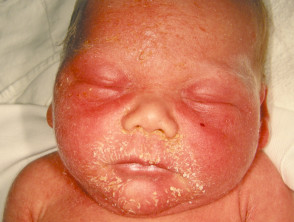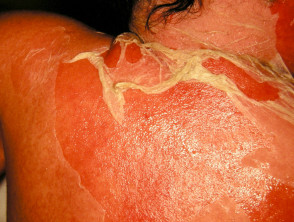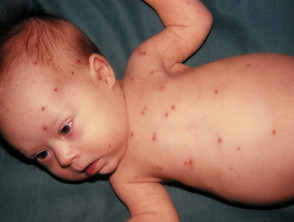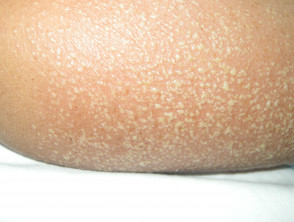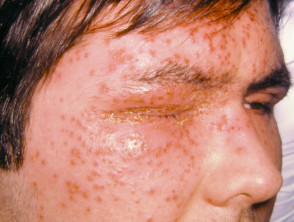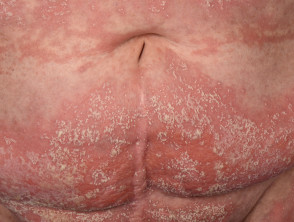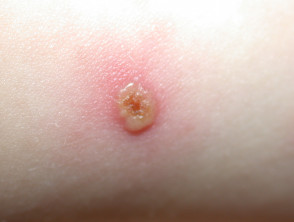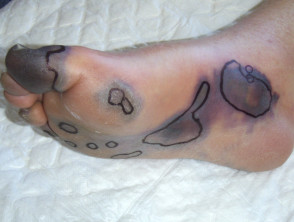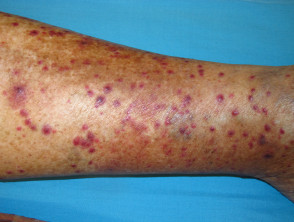Acute presentation of an unwell patient
Fever most commonly indicates bacterial or viral infection. If there is no systemic sepsis, localised rashes associated with infection tend to cause fewer systemic symptoms than generalised rashes associated with infection. Mucosal involvement is common. There are some acute auto-inflammatory disorders than mimic infection due to neutrophil activation, the neutrophilic dermatoses.
Consider performing the following tests:
- Swab for bacterial and viral culture if blisters, erosions, pustules or crusts
- Blood culture if high fever
- CBC, CRP
- Coagulation screen if purpura or very sick patient
- PCR and serology for specific bacteria or viruses
- Echocardiography if septic emboli suspected
- Skin biopsy of fresh skin lesions for histology, culture
Treatment depends on the cause. Consider referral to the emergency department if you are suspicious of a serious infection or the patient is very unwell.
Differential diagnosis
Consider:
- Is the rash localised or generalised? What is its distribution? Are mucosal sites involved?
- The severity of symptoms
- Predominant morphology: is/are there erythema, blisters/erosions, pustules/crusts, purple/black areas?
Fever and localised rash
Painful red, hot skin
- Cellulitis
- Unilateral swelling/induration
- Spreads over hours to days
- May have associated wound or skin disease
- Erysipelas
- Unilateral large plaques with sharp, stepped edge
- Large blisters
- Face, lower legs or anywhere
- Spreads over hours to days
- May have associated lymphangitis (red streak to local lymph nodes)
- Culture Streptococcus pyogenes
- Erythema nodosum
- Tender subcutaneous nodules
- Usually on lower legs
- Panniculitis – other
- Many causes
- Often associated with underlying disease
Prominent blisters/erosions
- Hand, foot and mouth
- Mainly young children
- Symmetrical vesicles mainly hands, feet and mouth
- Can extend to limbs and buttocks
- Culture/PCR enterovirus
- Herpes simplex
- Monomorphic, umbilicated vesicles, erosions, crust
- Culture/PCR Herpes simplex
- Herpes zoster
- Dermatomal
- Painful
- Monomorphic vesicles (early), erosions, crust and ulceration (late)
- Culture/PCR Herpes varicella-zoster
- Impetigo
- Crusted plaques, vesicles, bullae, pustules
- Culture Staphylococcus aureus +/- Streptococcus pyogenes
Pustules
- Folliculitis/furunculosis
- Based on hair follicle
- Fever if multiple boils or secondary cellulitis
- Culture Staphylococcus aureus, Pseudomonas
- Neutrophilic dermatosis of dorsal hands
- Dorsum hands
- Culture negative
- Biopsy confirmatory
Purple/black areas
- Ecthyma
- Not very unwell
- Eschar
- Small deep ulcers
- Culture Staphylococcus aureus +/- Streptococcus pyogenes
- Meningococcal disease
- Rapid deterioration in status
- Purpura of extremities and more generally in extremis (purpura fulminans due to disseminated intravascular coagulation)
- Neck stiffness
- Eyes sensitive to light
- Obtunded
- Blood culture/PCR Neisseria meningitidis
- Necrotising spider bite
- Endemic venomous spiders
- Spider must be observed to make this diagnosis
- Central punctum with purpura/necrosis, surrounding erythema and induration
Katipo spider bite
- Necrotising fasciitis
- Very sick; septic shock
- Rapid spread of cellulitis with purpura/blistering
- Fournier gangrene is necrotising fasciitis affecting genitalia
- Anaesthetic areas in early lesions
- Bacterial culture essential
- Vascular occlusion
- Cholesterol emboli
- Recent vascular/cardiac procedure
- Cholesterol emboli
-
- Septic emboli
- Endocarditis, arthritis
- Septic emboli
-
- Calciphylaxis
- Renal dialysis, diabetes
- Calciphylaxis
Fever and generalised rash
Redness
- Drug hypersensitivity syndrome
- Morbilliform (maculopapular) eruption or other rash
- Drug within 8 weeks of onset
- Other organs affected (renal, hepatic, respiratory, haematological)
- May have eosinophilia
- Erythema infectiosum / fifth disease
- Child > adult
- Slapped red cheek appearance
- Relapsing reticulate rash on arms
- Serology/PCR Parvovirus B19
- Erythema marginatum
- Rheumatic fever
- Evanescent annular/polycyclic rash with elevated border with temperature spike
- Evidence of streptococcal infection
- Erythroderma (red rash affecting > 90% body surface)
- Pre-existing atopic eczema, psoriasis
- New onset: drug eruption, pityriasis rubra pilaris, lymphoma
- Kawasaki disease
- Young child with red skin and mucosal surfaces
- Swollen hands and feet
- Peeling is a late feature
- Lymphadenopathy
- Cardiac artery aneurysms
- Other organ involvement leads to a variety of signs
- No specific diagnostic test
- Measles
- Red eyes, red tongue, Koplik spots
- Coryza, cough
- Rash has bronze hue
- Serology/RT-PCR measles
- Nonspecific exanthem
- Upper respiratory symptoms
- Roseola / erythema subitum
- Infant
- High fever + upper respiratory symptoms
- Rash is brief
- Serology for herpes virus 6 and 7 is not generally available
- Scarlet fever (Streptococcus pyogenes)
- Strawberry tongue
- Scarlatiniform rash: tiny red macules or rough papules
- Swollen then peeling hands
- Evidence of streptococcal infection
- Rare infections
- Arbovirus (recent travel)
- Rubella (unvaccinated)
- Typhoid fever
- Rare inflammatory disorders
- Various auto-inflammatory syndromes
- Often, genetic markers present
Blisters/erosions
- Acute febrile neutrophilic dermatosis
- Neck, limbs, upper trunk
- Pseudovesicular plaques, blisters, pustules, purpura, or ulceration
- Disease associations: rheumatoid arthritis, inflammatory bowel disease, autoimmune arthritis, myeloid dysplasia
- Biopsy suggestive (neutrophils)
- Bullous drug eruption
- Blistering form of drug hypersensitivity syndrome
- Drug within 8 weeks of onset
- Other organs affected
- May have eosinophilia
- Enterovirus infection
- Mild systemic symptoms
- Vesicular eruption
- Often followed by nail shedding
- PCR/serology enterovirus
- Erythema multiforme
- Mainly hands, feet, face
- Target lesions
- Often preceded by herpes simplex, orf, vaccination, drug etc
- Mycoplasma
- Erythema multiforme or Stevens Johnson syndrome–like eruption
- May or may not have pneumonia
- Serology Mycoplasma pneumoniae
- Staphylococcal scalded skin
- Infant or elderly, diabetic or renal impairment
- Discomfort is mild
- Develops from localised bullous impetigo
- Culture Staphylococcus aureus
- Stevens-Johnson / toxic epidermal necrolysis
- Patient very unwell
- Nearly always drug-induced
- Red skin comes off in sheets
- Varicella (chickenpox)
- More itch than pain
- Mainly scalp, face, trunk
- Culture/PCR Herpes varicella zoster
Pustules/crusts
May involve mucosal surfaces
- Acute generalised exanthematous pustulosis (AGEP)
- Drug eruption
- Biopsy suggestive
- Eczema herpeticum
- Prior eczema or rarely, other skin disease
- Clustered monomorphic, umbilicated vesicles, pustules or crusts
- Culture/PCR Herpes simplex
- Generalised pustular psoriasis (Zombusch)
- May or may not have history of plaque psoriasis
- Symmetrical eruption of numerous superficial pustules on red skin
- Often annular, flexural
- Associated with hypocalcaemia
- Biopsy suggestive
- Varicella (late stage)
- More itch than pain
- Mainly scalp, face, trunk
- Culture/PCR Herpes varicella zoster
Widespread purple/black areas
- Purpura fulminans / disseminated intravascular coagulation
- Usually due to meningococcal disease (neck stiffness, photophobia)
- Rapid deterioration in mental status
- Purpura initially affects extremities
- Blood cultures/meningococcal PCR may reveal cause
- Vasculitis
- Palpable purpura
- Recent infection or drug or underlying chronic disease
- Biopsy confirmatory
